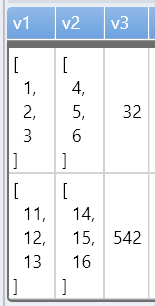series_dot_product_fl()
Applies to: ✅ Microsoft Fabric ✅ Azure Data Explorer ✅ Azure Monitor ✅ Microsoft Sentinel
Calculates the dot product of two numerical vectors.
The function series_dot_product_fl() is a user-defined function (UDF) that takes an expression containing two dynamic numerical arrays as input and calculates their dot product.
Note
Use the native function series_dot_product() instead of the function described in this document. The native function provides the same functionality and is better for performance and scalability. This document is provided for reference purposes only.
Syntax
series_dot_product_fl(vec1, vec2)
Learn more about syntax conventions.
Parameters
| Name | Type | Required | Description |
|---|---|---|---|
| vec1 | dynamic |
✔️ | An array of numeric values. |
| vec2 | dynamic |
✔️ | An array of numeric values that is the same length as vec1. |
Function definition
You can define the function by either embedding its code as a query-defined function, or creating it as a stored function in your database, as follows:
Define the function using the following let statement. No permissions are required.
Important
A let statement can't run on its own. It must be followed by a tabular expression statement. To run a working example of series_dot_product_fl(), see Example.
let series_dot_product_fl=(vec1:dynamic, vec2:dynamic)
{
let elem_prod = series_multiply(vec1, vec2);
let cum_sum = series_iir(elem_prod, dynamic([1]), dynamic([1,-1]));
todouble(cum_sum[-1])
};
// Write your query to use the function here.
Example
To use a query-defined function, invoke it after the embedded function definition.
let series_dot_product_fl=(vec1:dynamic, vec2:dynamic)
{
let elem_prod = series_multiply(vec1, vec2);
let cum_sum = series_iir(elem_prod, dynamic([1]), dynamic([1,-1]));
todouble(cum_sum[-1])
};
union
(print 1 | project v1=range(1, 3, 1), v2=range(4, 6, 1)),
(print 1 | project v1=range(11, 13, 1), v2=range(14, 16, 1))
| extend v3=series_dot_product_fl(v1, v2)
Output
